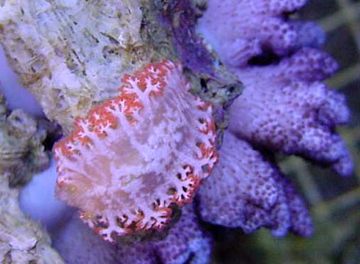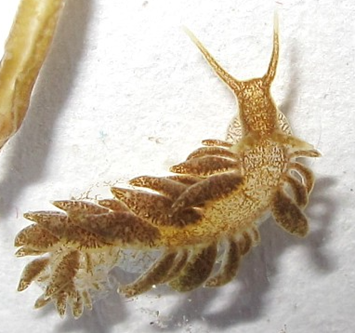Pest Nudibranchs in Reef Aquaria
By: Anna Mariano
There are many different types of pests that can infect a reef aquarium, but I wanted to put a focus on coral eating nudibranchs. I didn’t even know to look out for these little mollusks until some have been observed eating away at our montipora colonies at the aquaculture facility. There are different species of nudibranch that will eat corals as most are prey specific. Most pest species are found in the genus Phestilla that can use chemical cues to differentiate between host corals. It is important to try to look for these nudibranchs before adding them to a tank because an infestation can be hard to spot as they are super small.
The nudibranch species that are known to eat montipora and anacropora are Phestilla subodiosa. They can quickly decimate montipora colonies due to their fecundity or fast reproduction. They are also hard to spot because of small size and effective camouflage; however, it is easy to spot an infestation as there will be visible white spots on the corals where they have already eaten tissues. can be seen on the coral. They will only eat montipora as it was found these nudibranchs ignore other coral colonies with the same morphology and coenosteum (stony skeletal material) phenotype.


Tritoniopsis elegans is a nudibranch species that feasts on soft corals such as leathers, colt corals, and xenias. These guys can also be super hard to spot on their perspective prey because of their intricate cerata that imitates the look of soft corals. Their presence in an aquarium can be seen through feeding “scars” found on the soft corals. Egg spirals are usually white or yellow and can be found on the substrate.


Aeolidiopsis harrietae and Aeolidiopsis ransoni are some nudibranchs that can be seen feeding on zoanthids or corals in the genus Palythoa. These guys are kinda cool because they are “solar-powered” as they obtain zooxanthellae from feeding on palythoas. They can be seen in two color forms where the brown speckled forms obtain a good amount of zooxanthellae in their cerata and the pale translucent form has very few zooxanthellae in its tissues. The brown form can be seen as a small lump on the coral colony as they typically flatten the cerata against the sides of the body to increase surface area where light can fall. The translucent form of this nudibranch will burrow into the Palythoa colony while being covered with a layer of sand grains that are incorporated into the zoantharian's tissues.


There are many different species of nudibranchs that can feed on specific corals, but I just wanted to mention a few of the most common species found in reef aquaria. Since it is hard to spot these guys before adding corals to the tank, it is always a good idea to quarantine corals. If nudibranchs are found corals can be dipped in Revive or Coral Rx. Natural predators can also be put into the tank to eat these nudibranchs if the problem persists. Butterflyfish in the genus Chaetodon and wrasses in the genus Thalassoma and Coris are found to be efficient ways to get rid of pest nudibranchs.

I just find nudibranchs super cool. Honorable mention to my favorite helpful Berghia nudibranch that rid reef aquaria of the pest anemone Aiptasia. :)
